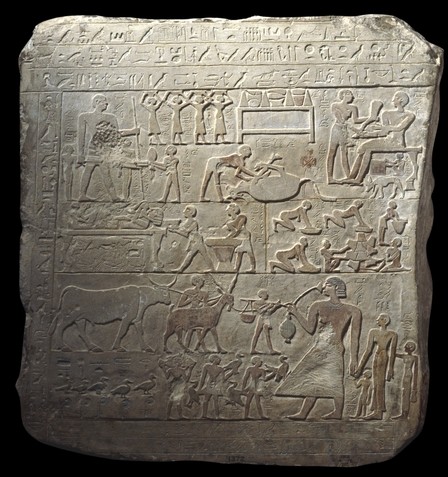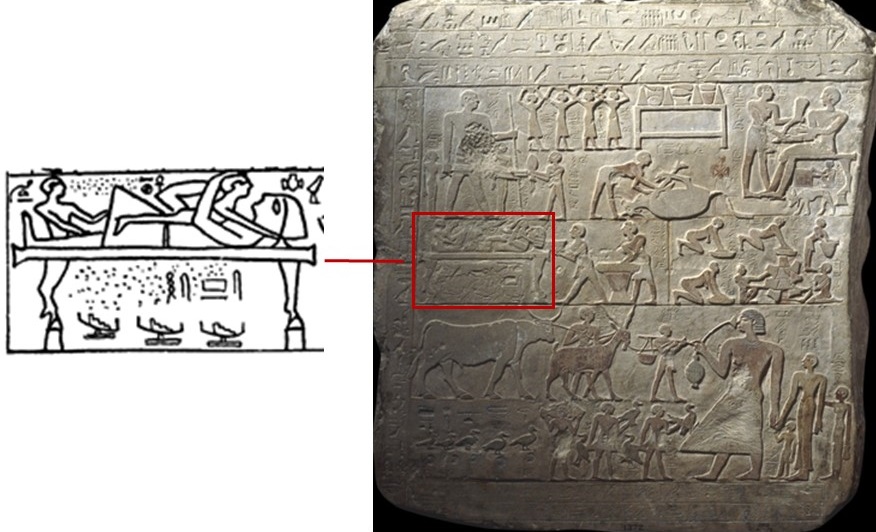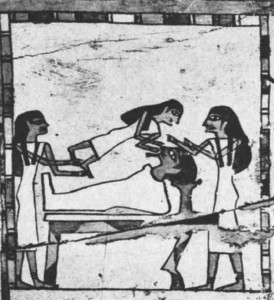Egyptian art can hide very important information in small pieces.
That is the case of the stele of Sebekaa in British Museum.

Stele of Sebekaa from Thebes. XI Dynasty. Photo: British Museum.
This piece of ancient Egyptian art dates from XI Dynasty and it was found in Thebes. In just a space of 70 cm x 60 cm (aprox.) the Egyptian artist could include a number of typical scenes which dominated the corpus of funerary Egyptian art.
Although the whole composition does not have a narrative logic, the greater part of the activities can be identified: butchery, bakery, offerings…

On the left a detail of the image of the dead being embraced by a smaller human figure.
At the left of the middle register there is an isolated scene, which was not too usual in ancient Egypain art: the dead lies on his bier and he is embraced by a smaller figure. According to the information from the British Museum’s website: “The man on the bed is probably the deceased, and the figure on top of him might be one of a variety of goddesses, such as Isis, Nephthys and Nut, who embrace him. Whether there are any sexual connotations in this scene is uncertain”.

Scene from the coffin of Henui. XIII Dynasty. Gebelein.
There is a very similar scene in the coffin of Henui from Guebelein and dating from the XIII Dynasty. The Egyptian artist chose to represent the dead being assisted by two woman (the two mourners in the role of Isis and Nephtys) while a feminine figure lies over him for revitalising the body.
One of the purposes of the mourning rite in Ancient Egypt was to give back to the dead the virility and it seems that the Egyptian art of the Middle Kingdom found the way of depicting this sexual symbol of the funerary thought.
In the stele of Sebekaa the Egyptian artist included in the funerary corpus the moment of the mourning rite. He could have chosen to represent that moment just with the image of the two mourners at both ends of the bier, but in this case, we do not why, he depicted a sexual moment. So, the sexual connotation would not be uncertain, but sure.